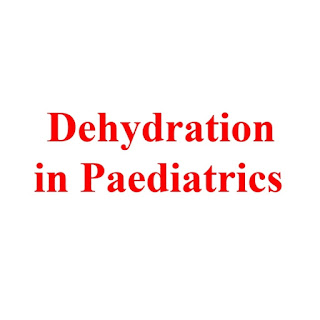Understanding Dehydration in Paediatrics: A Parent’s Guide
Dehydration in children is more common and more dangerous than most people realize. Unlike adults, children—especially infants and toddlers—have smaller fluid reserves and higher metabolic rates, which makes them more susceptible to fluid loss. Whether it’s due to vomiting, diarrhea, fever, or simply not drinking enough water, dehydration can escalate quickly and must be addressed promptly.
What is Dehydration?
Dehydration occurs when a child loses more fluids than they take in. These fluids include not just water, but also important electrolytes like sodium, potassium, and chloride that the body needs to function properly. The result is a deficit in the body’s fluid balance, which can affect every system in a child's body—from circulation to brain function.
Causes of Dehydration in Children
There are several common causes of dehydration in the pediatric population:
- Gastroenteritis: The most frequent cause, especially in babies and toddlers. Diarrhea and vomiting cause rapid fluid loss.
- Fever: A high temperature increases water loss through sweating and breathing.
- Inadequate fluid intake: Common in hot weather or when a child is unwell and refuses to drink.
- Excessive sweating: Active children or those playing sports can lose a lot of water without realizing it.
- Diabetes or certain kidney disorders: These can lead to increased urination and fluid loss.
Signs and Symptoms to Watch For
Recognizing the early signs of dehydration can prevent it from becoming severe. Look out for:
- Dry mouth and tongue
- Sunken eyes or cheeks
- Decreased urine output (fewer wet diapers or less frequent bathroom trips)
- Dark yellow urine
- Irritability or unusual drowsiness
- Cool, mottled, or dry skin
- No tears when crying
- Sunken soft spot (fontanelle) in infants
In more severe cases, symptoms can include rapid heartbeat, fast breathing, lethargy, or even unconsciousness.
Diagnosing Dehydration
Healthcare providers usually diagnose dehydration based on medical history and physical examination. They may ask about recent illnesses, fluid intake, and output. In moderate to severe cases, blood tests may be used to check electrolyte levels and kidney function.
Treatment and Management
Mild dehydration can often be managed at home using oral rehydration solutions (ORS). These specially formulated drinks replace both fluids and electrolytes and are more effective than plain water or sugary drinks.
Moderate to severe dehydration, however, requires medical attention. In many cases, intravenous (IV) fluids are needed to quickly restore fluid balance. Hospitals also monitor for any complications like electrolyte imbalances or kidney issues.
Prevention is Better than Cure
Preventing dehydration is easier than treating it:
- Encourage your child to drink water regularly, especially in hot weather or during illness.
- Give extra fluids when your child has a fever or is experiencing diarrhea or vomiting.
- Use oral rehydration solutions early when signs of dehydration begin.
- Avoid giving sugary drinks or soda, which can make diarrhea worse.
When to See a Doctor
Seek medical help if your child:
- Refuses to drink anything
- Has persistent vomiting or diarrhea
- Is unusually sleepy, difficult to wake, or very irritable
- Shows signs of moderate to severe dehydration
Final Thoughts
Dehydration is a serious but preventable condition in children. Knowing the signs, acting early, and keeping your child well-hydrated—especially during illness or hot weather—can make a big difference. When in doubt, consult your pediatrician. In a child’s body, every drop really does count.

.jpeg)

